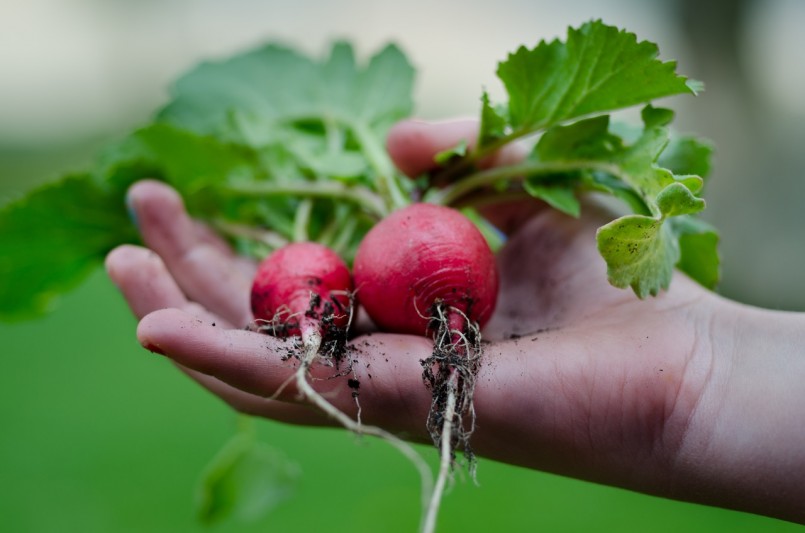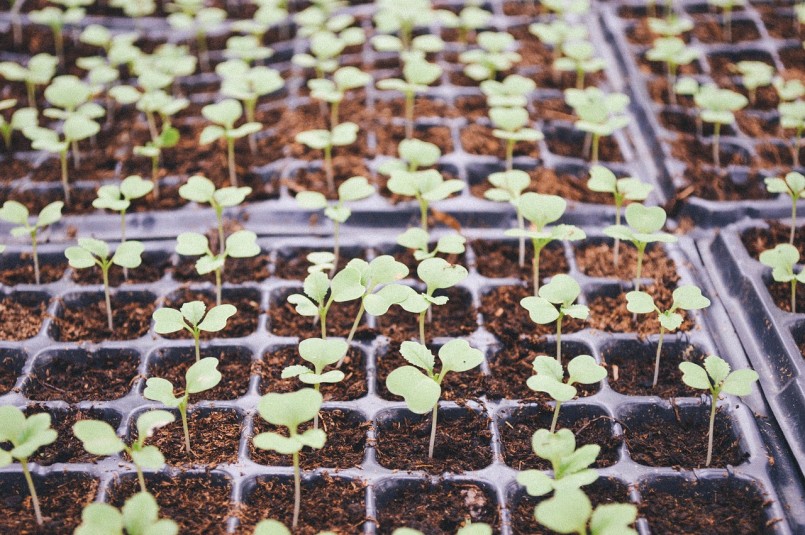Environment
What’s driving the growing Seed Savers movement and why you should care

Since the recent flooding of the entrance to Norway’s Svalbard Global Seed Vault (otherwise known as the “Doomsday Vault”) after an uncharacteristic thaw of the surrounding permafrost, new conversations have started around the concept of seed saving. The Vault, which stores the seeds to tens of thousands of crop varieties and over 4,000 plant species from across the globe, is known as the world’s largest secure seed storage facility. Although the Vault’s seeds are safe and no permanent damage resulted from the flooding, some have grown uneasy about the occurrence in the face of unknown climate change risks, and have begun considering the prospect of saving their seeds.
Although some may feel the need to invest in mini-vaults (which often consist of a personalized or small family seed bank), top minds on the subject suggest simple, dry, cool, dark spaces for seed storage — such as an envelope in the hall closet, advises Seed Savers’, John Torgrimson. Torgrimson, Executive Director of Seed Savers Exchange, a network of over 13,000 members and preservers of approximately 30,000 plant seed varieties, explains that basic storage in a cool, dry space is usually sufficient to keep seeds viable for several years. Some prefer to freeze their seeds or store them in the refrigerator, which may prolong that viability.
Torgrimson shares that although the Svalbard entrance flooding was a concern, there are 1,700 seed banks in the world which generally follow the same protocol for seed saving. Having sent 225 varieties of seeds to the Svalbard Vault this year himself, Torgrimson advises that the key concept behind seed-saving is maintaining diversity while preparing for unknown climate conditions in the future. According to a recent interview, he shared, “The reason we should care about conserving heirlooms and genetic diversity is that we don’t know what type of conditions we’ll be dealing with a hundred years from now. So, it’s important that we save this genetic diversity. Maybe there’s a particular variety that’s not very popular now, but it could solve future problems that we can’t even imagine today. It could be overly wet conditions. Or, it could be extra long or short growing seasons. So, it’s really about maintaining diversity and genetic heritage.”

Seed Savers, based on a sprawling 809-acre farm near Decorah, Iowa, encourages and teaches about the preserving of unique plant varieties saved by farmers and passed down from generation to generation. Their seeds are stored in the central Seed Savers’ vault, but also shared with others to grow and save as well. This activity is called “participatory conservation” in the heirloom seed movement, which they encourage people to get involved with at seedsavers.org or by starting their own, independent seed exchange. Torgrimson, who sent 225 seed varieties to Svalbard this year himself, further explains, “If you go to a grocery store, you’ll probably have access to about 10 apple varieties. Since the early 1600s there have been 20,000 different varieties of apples documented in North America. Today, we think there are a little more than 4,000 varieties remaining. Seed Savers Exchange has about 1,000 varieties of apple trees, or about 25 percent of the apple varieties of North America growing here. Most of our varieties are pre-1900. We also have built a new orchard that’s focused around Midwestern varieties, and also around functionality… so gardeners can learn which types were considered best for certain functions.” Torgrimson also suggests those who wish to learn more explore the documentary Seeds of Time or the book Seeds on Ice by Cary Fowler.
Shannon McCabe, Writer and Consultant for Baker Creek Heirloom Seeds, advises aspiring seed savers to begin a “living seed bank”, by growing their own plants in their home gardens, seeking out new and diverse seed varieties, and working toward adapting them to their own region’s micro-climate. McCabe, like Torgrimson, suggests people start and preserve their own seed banks to swap with neighbors. This practice, according to McCabe, ensures the diversity of the seed bank over time and subsequently ensures the food system is secure, well-adapted and resilient in each region. McCabe recently visited Greece to attend Europe’s largest seed swap to gain access to even more unique seed varieties from around the globe. Shannon’s writing can be enjoyed on the company’s website, and she can also be viewed on live video Tuesdays and Thursdays giving gardening and seed-saving advice on Baker Creek’s Facebook page.
Whether we’re prepping for doomsday or just experimenting, there’s one thing for sure: possessing one’s own seed bank (or being part of a swap or neighborhood bank) ensures independence from a substantially shrinking variety of commercially available seeds and undoubtedly makes home gardening (and eating!) more interesting, tasty, and fun.
Kristen lives in the Michiana area, where she enjoys lake-effect weather, apple orchards and occasional South Shore rides into Chicago. She can probably tell you more about apple cider vinegar than you'd ever want to know. You can reach her at: http://lakesedge.wix.com/lakesidewriting


0 comments